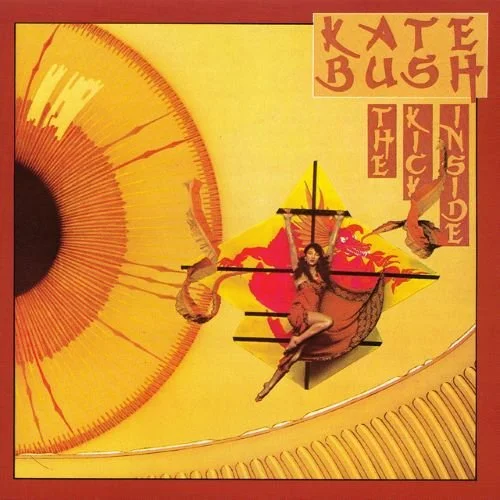FEATURE:
It’s Me, Cathy!
IN THIS PHOTO: Kate Bush in a Tokyo hotel in June 1978/PHOTO CREDIT: Getty Images/Koh Hasebe
Kate Bush and the Signing of the Deal
__________
I am once again…
referring to the pages of Classic Pop and their recent special dedicated to Kate Bush. I have been getting a lot from it, and it has definitely influenced me and provoked new features and ideas. One that I have sort of covered before but want to return to is when Kate Bush signed her record deal. Born as Catherine and known as Cathy, I like the fact that Kate Bush seems more like a professional name. This separation from the teenager who was at home and making music and the woman who would release one of the most outstanding and original debut singles, Wuthering Heights, when she was nineteen. I am fascinated about the earliest days and planting the seeds. Bush signed with EMI in July 1976, shortly after her eighteenth birthday. In terms of getting from her home to a record label, I have covered this before, suffice to say that David Gilmour was a big reason for her signing. He paid for her to have professional recordings in 1975 of The Man with the Child in His Eyes, The Saxophone Song and Humming (the first two appeared on her debut album, The Kick Inside), and he acted as Executive Producer. Bush had about fifty songs (culled from hundreds), and Gilmour selected three to record. Bush could have excelled academically and gone into another field. Her father Robert was a doctor she could have followed suit. Maybe into psychology or something adjacent. There were options.
IN THIS PHOTO: Kate Bush in Japan in 1978 (she performed live there, made a commercial for Seiko and released two singles, Moving and Them Heavy People)
Instead, with the £3,000 advance given to her by EMI (together with £500 with EMI Publishing), and a small inheritance from her aunt, Bush had the money so she could work on her music and develop her career. Amazing to think that, leaving school before her A-Levels, she then moved to a property in Lewisham with her brothers John and Paddy. They all lived in the same property and had their own flats! I get comedic images of them each on a floor and hanging out in the evenings. Quite a cute and idyllic view! It would have been helpful and of great comfort that Bush, the youngest sibling, had her brothers around for support. Both were musical (especially Paddy, who played on her debut albums and throughout her career), and they had her back. That support was invaluable at a time when she was relatively unknown and there was no guarantee when her debut would be recorded and what would happen. Bush took up dance lessons with Arlene Phillips and Robin Kovac (who choreographed the routine for Wuthering Heights (the white dress version), and mine with Lindsay Kemp and Adam Darius. Useful tools that would feed into her music, live performances and even her songwriting. It was a busy time before she went into the studio in 1977 to resume recording of The Kick Inside. It is that signing of the deal and the soft approach of EMI that is encouraging.
Most record labels would have signed Bush and then, as they had paid an advance or she was paid, they’d expect an album within months. This is sort of what happened after Bush released her debut album. She was given months to follow it up. Though Lionheart is excellent, the fact it was released in 1978 meant she was so busy promoting her debut that she did not have sufficient space and creative impetus and freedom to write an album that satisfied her. As it was, she only wrote three new songs for Lionheart. Anyway, EMI saw Bush as a long-term artist so, when she signed the deal, she was free to write and to work at her own rate. Little did they know that Bush would become an artist who took quite a while to complete albums! Whilst some see that as procrastinating and a negative, it actually means that she can make the albums sound as she wants them. Bush has expressed some unhappiness with The Kick Inside, in the sense she did not get as much say as she would have liked and was more of a bystander rather than the architect. I think the album would have sounded poor if it was rushed and EMI raced her into the studio. EMI knew that, if they were trying to sell a fifteen or sixteen-year-old, then it would be quite a hard pitch! They knew she was a promising and growing talent who they could market easier a while down the line. Although Bush was still nineteen when her debut album came out, she had matured and was at an age where she could handle the demands.
It is interesting reading Classic Pop, as David Gilmour had a different version of events. Rather than EMI claiming they wanted Bush to mature and have space before they called her into the studio, it seems like there was delay and dispute about which producer should helm the album. Gilmour contacted Andrew Powell before Bush headed to record in June 1975. Gilmour handed a tape to Powell and control of the project. With Geoff Emerick engineering, Powell was naturally the right producer as early as 1975. With EMI perhaps feeling he was wrong or not the right fit, perhaps The Kick Inside could have come to fruition earlier than it did. I am not sure what course of events would have taken place had a different producer been selected! Gilmour insists that EMI felt that Bush didn’t have enough good songs and the ones they had been given were a fluke. Feeling Powell was a dud, this quest to find various producers circled back around to Gilmour’s insistence that Powell was the right choice. I don’t think Bush had too much say or was caught in the dispute, but it must have been a little unsettling for her. It is true that EMI had a lot of faith in her but, as a unique voice and special talent, there were no comparisons out there. No protocol when it came to how to proceed and what to do with her!
Bush was an accomplished pianist and singer, but she was still developing and has no live performance experience. Her brother Paddy graduated from a musical instrument technology course, and he wanted to put on a performance at a gallery in Whitechapel. A band was put together – not dissimilar to the KT Bush Band that would tour pubs and clubs around London and beyond before Bush recorded The Kick Inside -, that featured Barry Sherlock, Vic King and the two Bushes. Kate Bush did not sing then. Instead, she danced in a woolly, tight-knit outfit and mimed this sort of trumpet thing. It has been compared with the Blue Meanies from The Beatles’ Yellow Submarine film. I think that transformation from Cathy to Kate Bush happened when the KT Bush Band did their demo on 5th April, 1977. That line-up comprised Vic King, Del Palmer (who Bush was in a relationship with until the ‘90s) and the Bush siblings (Paddy and Kate). Bush would record The Kick Inside in July and August 1977, where the full transformation from the aspiring artist who lived at the family home at East Wickham Farm in Welling, to the teen who moved to London and made her first steps into an industry that, before long, were fascinated by this once-in-a-generation talent. Those early months really compel me. Learning more about Bush signing with EMI and, interestingly, the struggle between EMI and David Gilmour when it came to securing and accepting Andrew Powell as the producer (he would also produce Lionheart but would not continue from Never for Ever, her third album, onward). Planting those seeds and laying the groundwork is such an important time. It is really interesting learning how Bush was discovered and EMI’s approach to her. I wonder if anyone at the label or watched the KT Bush Band in 1977 were quite aware of…
WHAT Kate Bush would unveil to the world!



